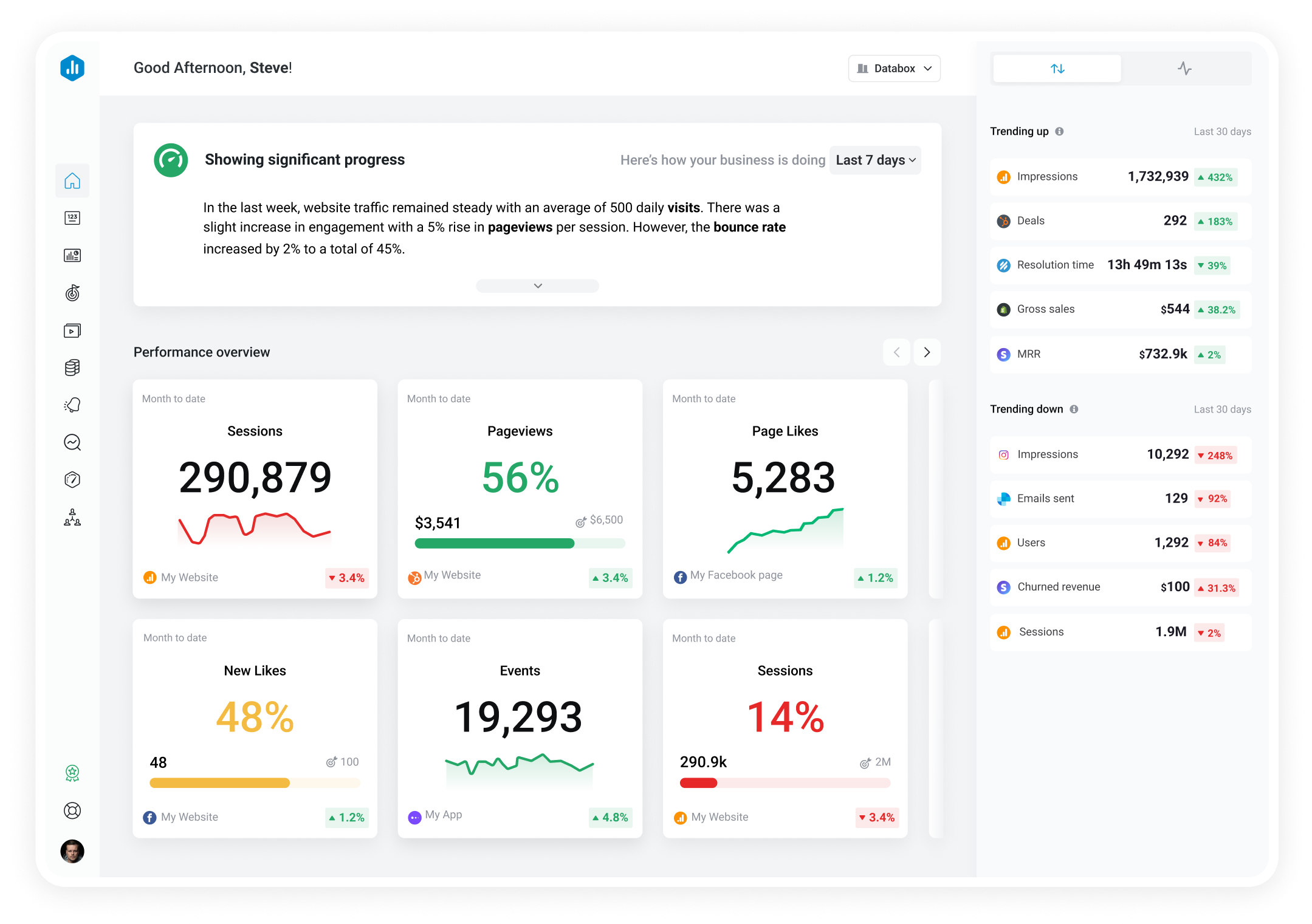Track all of your key business metrics from one screen
GET STARTED
 QuickBooks
Fixed Assets (Cash)
QuickBooks
Fixed Assets (Cash) Fixed Assets (Cash) tracks the cash used for purchasing and maintaining long-term physical assets, helping businesses monitor capital expenditures in QuickBooks.
With Databox you can track all your metrics from various data sources in one place.

Used to show a simple Metric or to draw attention to one key number.
Databox is a business analytics software that allows you to track and visualize your most important metrics from any data source in one centralized platform.
To track Fixed Assets (Cash) using Databox, follow these steps:
 Goals
Goals Scorecards
Scorecards Metric Digest
Metric Digest Metric Builder
Metric Builder Data Calculations
Data Calculations Performance Screen
Performance Screen